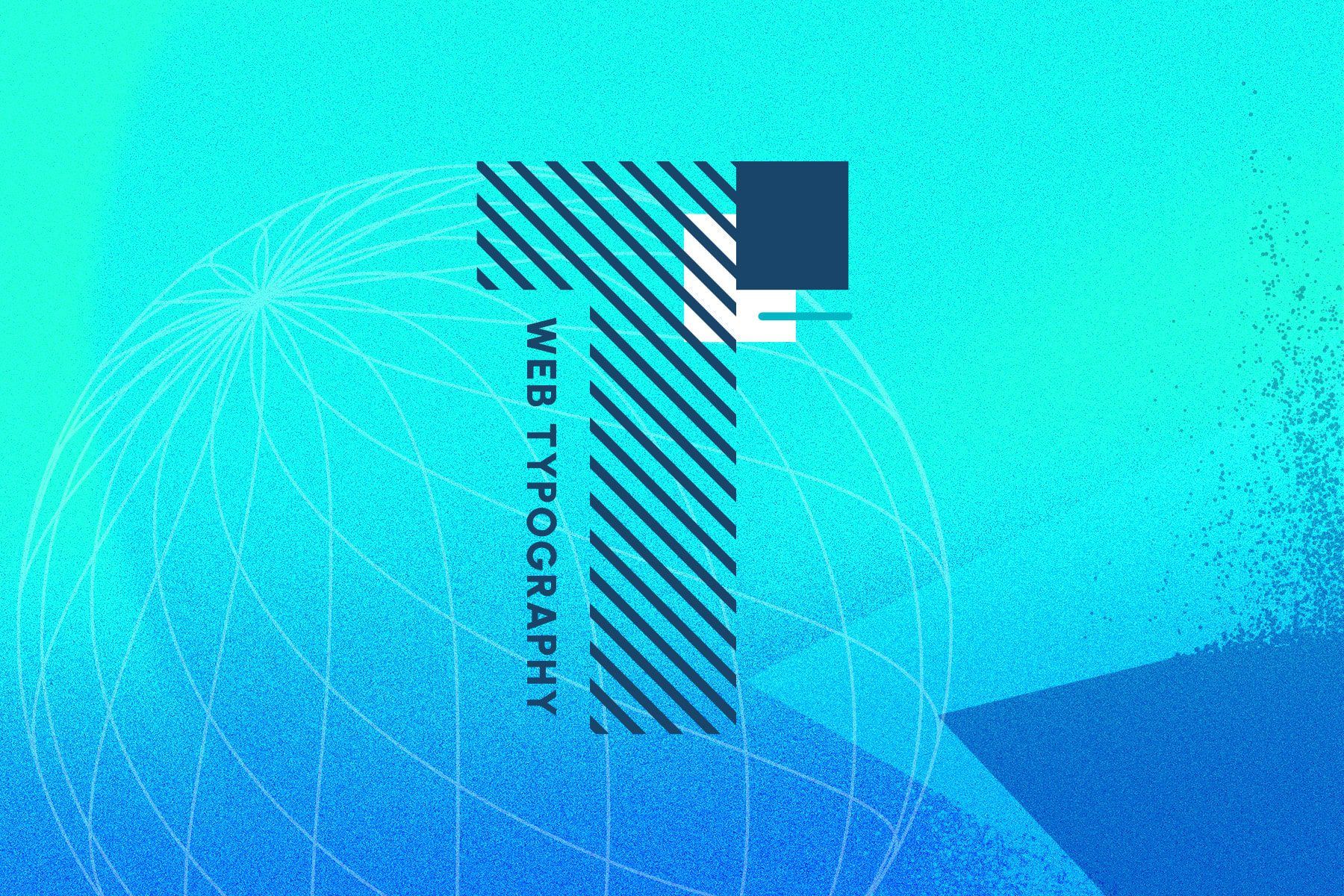The initial impression your website leaves on first-time visitors directly determines your ability to convert leads into customers.
If prospects perceive your brand as competent and credible, your chances of earning their business will be high. But if your website elicits an unfavorable opinion, you’re almost guaranteed to experience less-than-impressive conversion rates.
Web design has a direct impact on brand perception. In fact, several scientific studies conducted over more than two decades have confirmed the importance of web design in building a positive (or negative) brand image.
What’s fascinating isn’t just that consumers take website aesthetics and usability into account when judging brands. They also form strong opinions within the blink of an eye. Scientific data suggests that brand evaluation happens within 50 milliseconds of landing on a webpage.
Even more interestingly, 94% of first impressions are design-related, showing just how crucial it is to make web design choices that build instant visitor confidence.
To guarantee the effectiveness of your digital presence in helping you convert new customers, you need to invest in trust-building web design.
This doesn’t require you to completely overhaul your site. All you need to do is make a few smart web design choices that will help you instantly earn consumer trust and naturally nudge prospects closer to a conversion.
1. Integrate Social Proof Seamlessly
Social proof plays a crucial role in building brand trust via your digital presence.
- 88% of consumers consider brand trust a top factor influencing their buying behavior (alongside product quality and value for money)
- 96% of shoppers read online reviews at least occasionally when researching local businesses
Industries such as finance, health, and fashion typically deal with low levels of consumer confidence, and are more reliant on customer feedback than others. But even if you don’t operate in these markets, using social proof as a key brand differentiator could be the secret to converting more customers.
The one thing you don’t want to do, however, is utilize social proof in a way that overwhelms web visitors.
Shoppers are hyper-aware of fake reviews and non-authentic advertising. That’s why you have to integrate social proof into your web design in a way that’s seamless. Arguably, this is the design choice that could make the difference between your customer feedback appearing convincing and trustworthy vs. dubious.
So, what’s the best way to make social proof a natural and convincing part of your website design?A good rule of thumb is to source customer feedback from widely-trusted sources. Dermatology and Laser Group, for instance, pulls its social proof from Google, which is already the first place people research brands. They further establish credibility and trust by referencing relevant certifications in video content, and have a dedicated ‘Meet the doctor’ page that allows potential customers to check the owner’s credentials and experience.
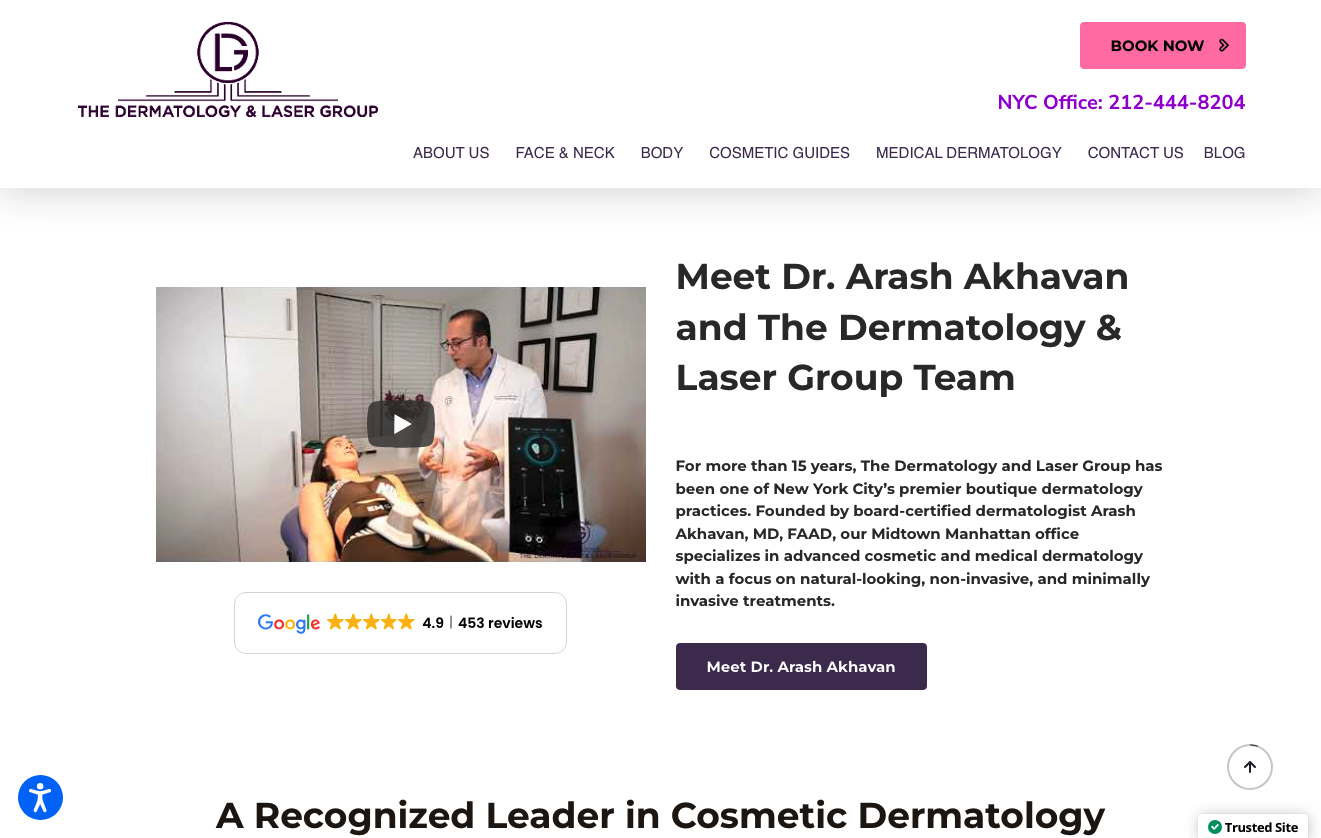
2. Answer Common Questions Without Overwhelming the Visual Space
For some brands, ‘lead confusion’ stands out as one of their top nurturing obstacles. And it’s not much of a surprise.
Psychological research discovered that people who are overwhelmed by information regularly exhibit signs of analysis paralysis. And the higher the complexity of the subject (or product) that they’re trying to learn about, the more likely they are to experience said confusion.
This phenomenon can be a real conversion rate killer, particularly for businesses operating in complex niches or selling products for which there might not be an established market.
To overcome this obstacle, businesses often rely on website copy, FAQ sections, and product explainers to raise product understanding. But the simple truth is that showing off too much information within a webpage overwhelms web design and compromises user experience.
If you want to build visitor confidence without jeopardizing your site’s aesthetic appeal, explore opportunities to simplify the process of product research on your webpages. Alternatively, if you need to answer a complex question, direct your visitors to a dedicated page instead of forcing them to scan several blocks of text to find what they need.
For example, look at how Origin Accounting implements this design strategy on its website. This business doesn’t just collapse FAQs to make it easier for web visitors to scan the site for relevant info. It also places FAQs in context-specific areas, further improving the user experience by allowing visitors to receive answers to their questions as they arise.
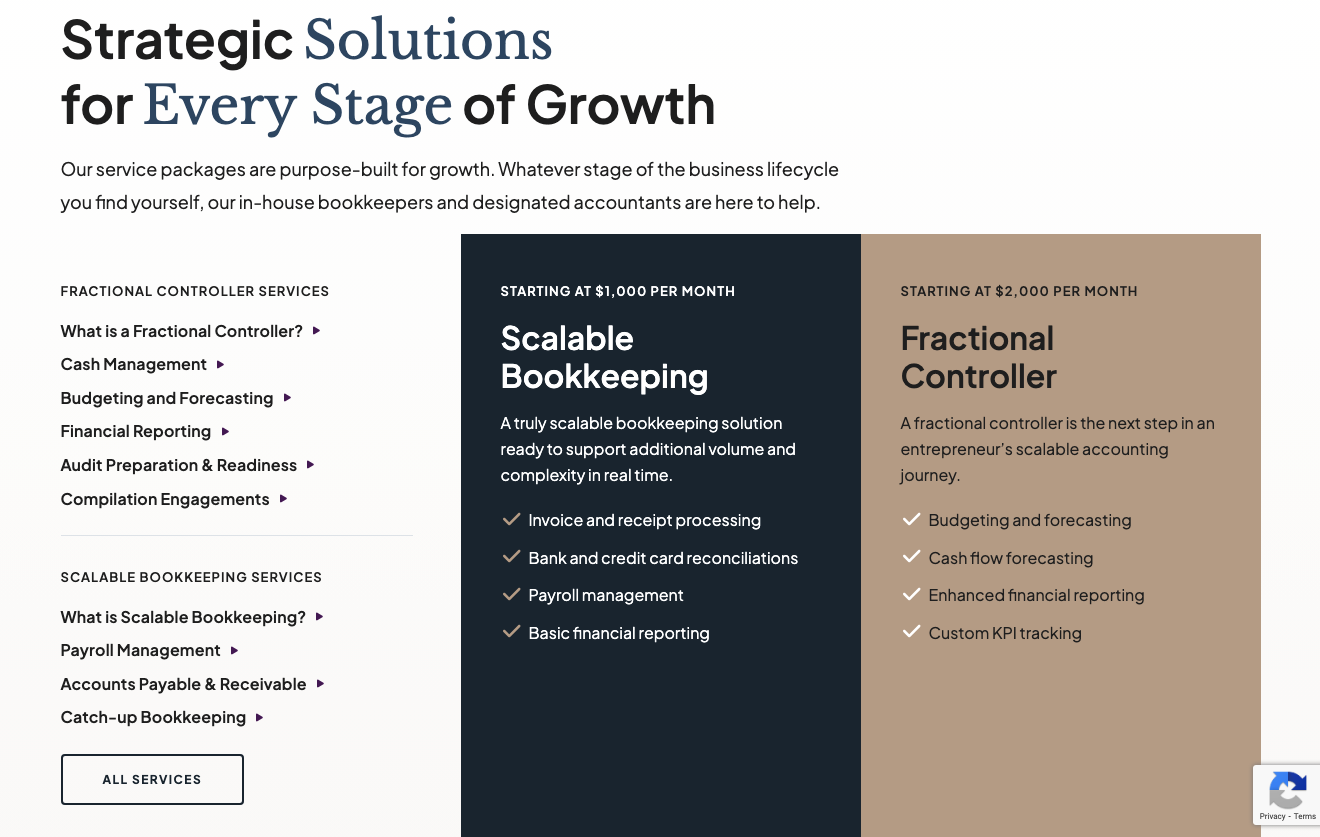
3. Design Uniformity That Creates Instant Brand Recognition
Consumers trust businesses they’re familiar with.
If you look at the data on the effect of brand familiarity on purchase intent, you’ll find that 82% of people choose a familiar brand for the first click on SERPs. Moreover, research indicates that nostalgia has a huge impact on buying behaviour, with 76% of UK consumers being attracted to sweets that remind them of their childhood.
When searching for strategies that drive consumer confidence and (consequently) elevate purchase intention, explore ways to maximize visual brand differentiation.
A unique brand image will aid brand recall and recognition throughout off-site content distribution and communication channels. It will also create a cohesive and unified browsing experience on-site, effectively building visitor confidence.
For inspiration, check out Socialplug. This brand employs specific colours and visuals on its homepage to create brand differentiation. Then it extends its most recognizable design elements throughout its website, with all visual branding elements employing a consistent style established on its homepage — including blog headers and social media posts.
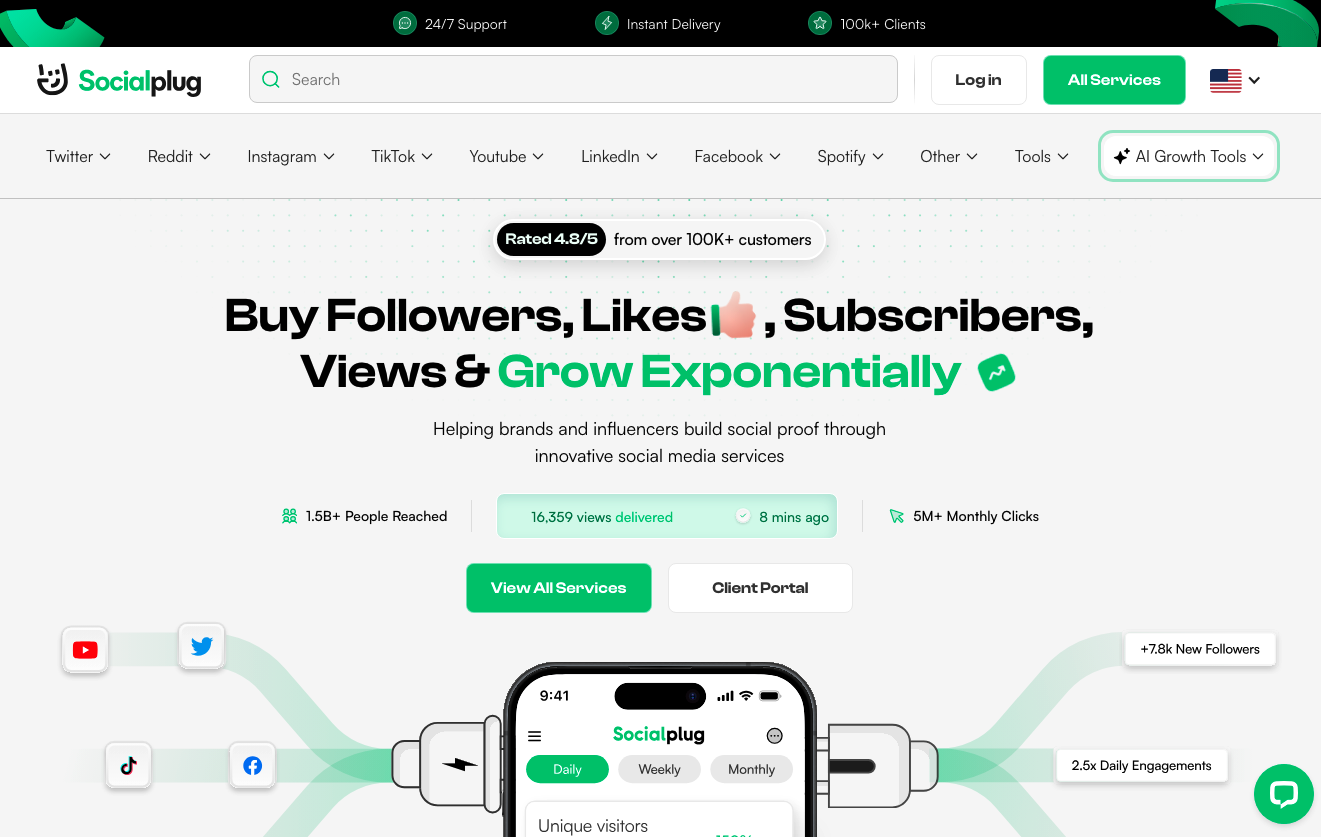
4. Understand the Importance of Visuals
While one way branded visuals contribute to web visitor confidence is by aiding familiarity, it’s also worth noting that visual formats play a crucial role in online shopping.
Research shows that 75% of consumers rely on product photography when making online buying decisions. Considering that a digital setting prevents shoppers from evaluating products through touch and feel, visuals also often represent one of the few ways people can collect relevant product information — particularly when it comes to lifestyle and leisure products.
So, when exploring design tactics that can help elevate customer confidence and boost conversions, do your best to lead with visuals — especially where words aren’t enough to convey your unique value propositions.
A good rule of thumb to follow when implementing this strategy is to showcase your products by focusing on two outcomes.
- Try to present your offer in the best possible light with high-quality product imagery that conveys sufficient detail from multiple angles to elevate product understanding.
- Consider investing in emotional imagery that could help you build stronger relationships with your customers or align your offer with your target audience’s wants, needs, and aspirations.
If you check out Eagle Bluff, you’ll find that the business does a tremendous job of using visuals to elevate visitor confidence. It shows off aspirational photos of its location to attract more customers and uses authentic imagery to describe its rooms. It’s a marvelous strategy for managing customer expectations and sending the message that visitors genuinely get what they booked online — no filters, no embellishments.
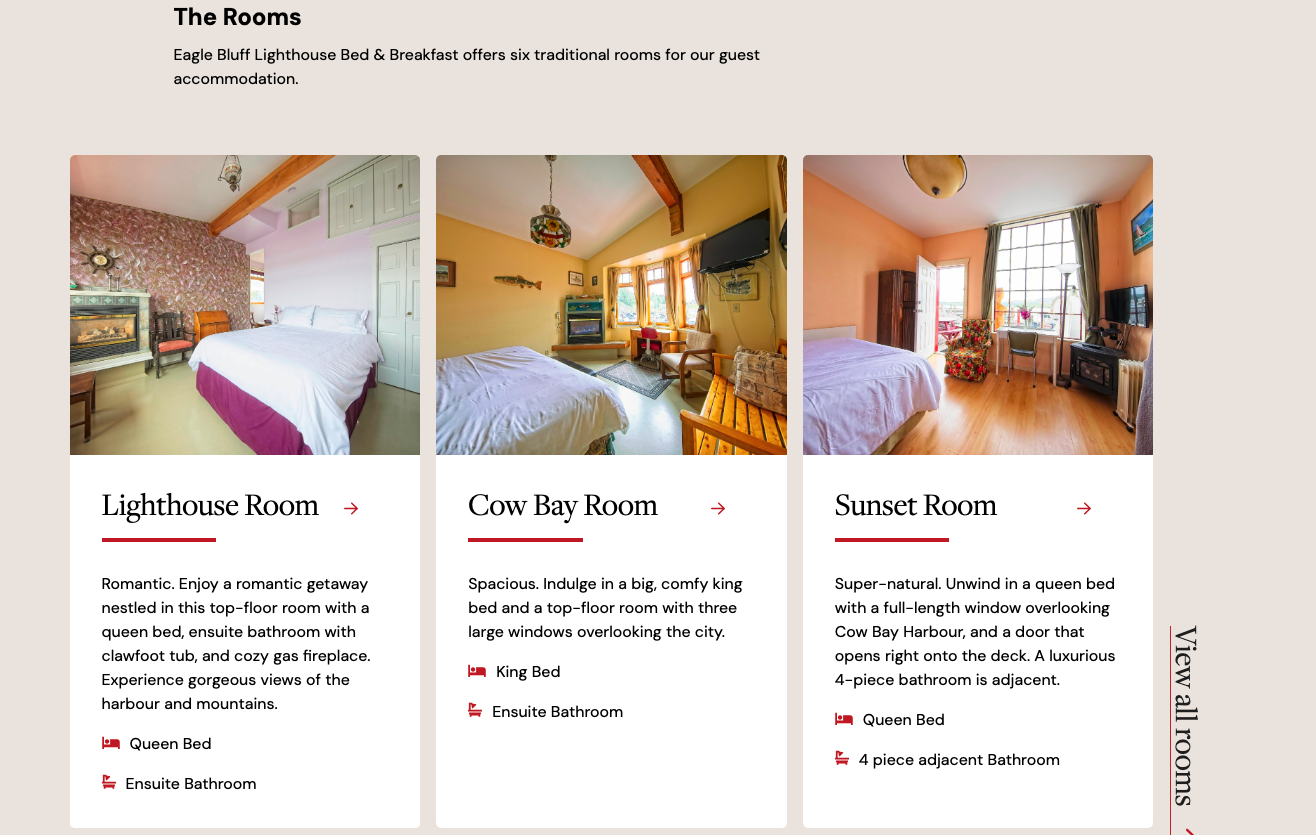
Another excellent tactic you can use, especially if your products don’t lend themselves to photography, is to use visual cues to show what your solutions offer to buyers.
For example, the supplement products from Performance Lab look just like any other pill. However, the company creates a clear visual connection between the product and its ingredients. This positions the brand as offering an easy and convenient way for customers to access essential vitamins and minerals. Customers don’t need to worry about dosing, timing, or bioavailability in food.
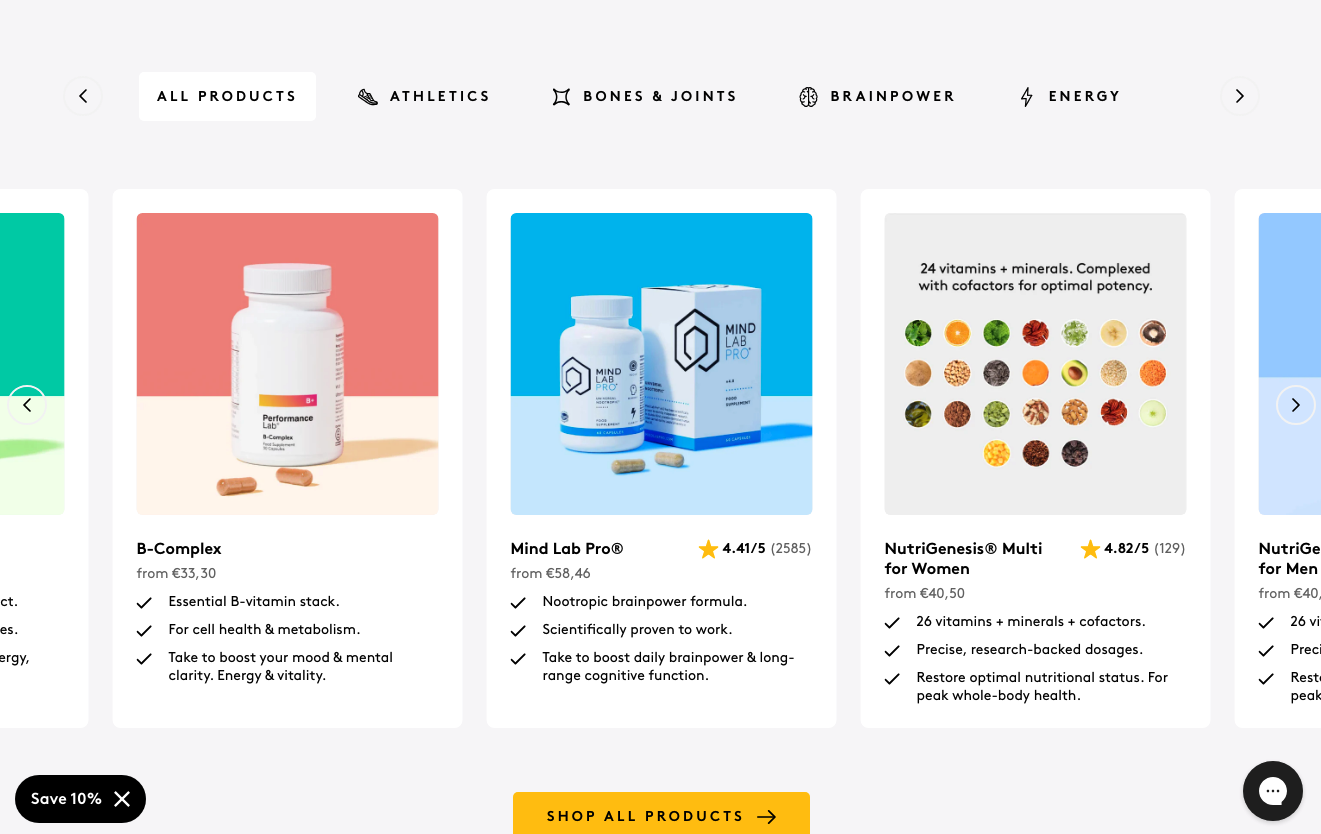
5. Lower the Stakes for Clicking on a CTA
Sometimes, your biggest conversion obstacle isn’t a lack of brand credibility. Instead, it’s simply your target audience’s high level of risk aversion.
When visiting business websites, consumers are hyper-aware of the fact that they’re being sold to. If they’re still unsure about their needs or don’t feel confident in their ability to make the right purchasing decision, they might shy away from clicking any CTA, as the action traditionally starts the conversion process.
One effective web design strategy to make your prospects more confident and comfortable in their brand interactions is to place trust-building and risk-mitigating microcopy messages in and around your primary CTAs.
For example, Somewhere, a remote recruitment agency, understands that professional buyers prioritize ROI when choosing services. To remove the conversion barrier — the unwillingness to risk a conversion due to the inability to fully predict hiring outcomes — they use microcopy to build visitor confidence. By stating outright that “you don’t pay if you don’t hire,” they make web visitors more comfortable. Additionally, they demonstrate a dedication to delivering real value, being willing to waive costs if customers don’t get what they need.

6. Ensure Some Trust Signals Are Measurable
Well-written web copy and hyper-relevant value propositions are key to convincing your target audience that they can trust your business to remove their pain points.
But here’s the thing. Although promises can be a great way to engage your audience and start building their confidence in your brand, they’re not always sufficient to drive conversions. Trust requires concrete proof of expertise — not just of your intention to do right by your customers.
With this in mind, it’s a good idea to ensure some of the trust signals you use on your website are measurable and verifiable.
By using design to highlight measurability, you can effectively appeal to the segment of your audience looking to make data-based buying decisions. Furthermore, this web design strategy might also help you overcome the conversion obstacle posed by emotional decision-making.
Think about it in this way: if 95% of purchase decisions are subconscious, then the reason people aren’t feeling confident to buy from your brand might be a gut feeling and not concrete evidence of your brand’s competence or the attractiveness of your offer.
To see how this design tactic works in real life, check out Sequoia Mergers. This brand understands that its target audience needs proof of effectiveness and expertise before making a high-stakes purchase decision. To ensure its prospects feel reassured by quantifiable data, Sequoia Mergers employs web design to make its experience and expertise measurable by showing off relevant numbers in the ‘Track Record’ social proof section on its homepage.
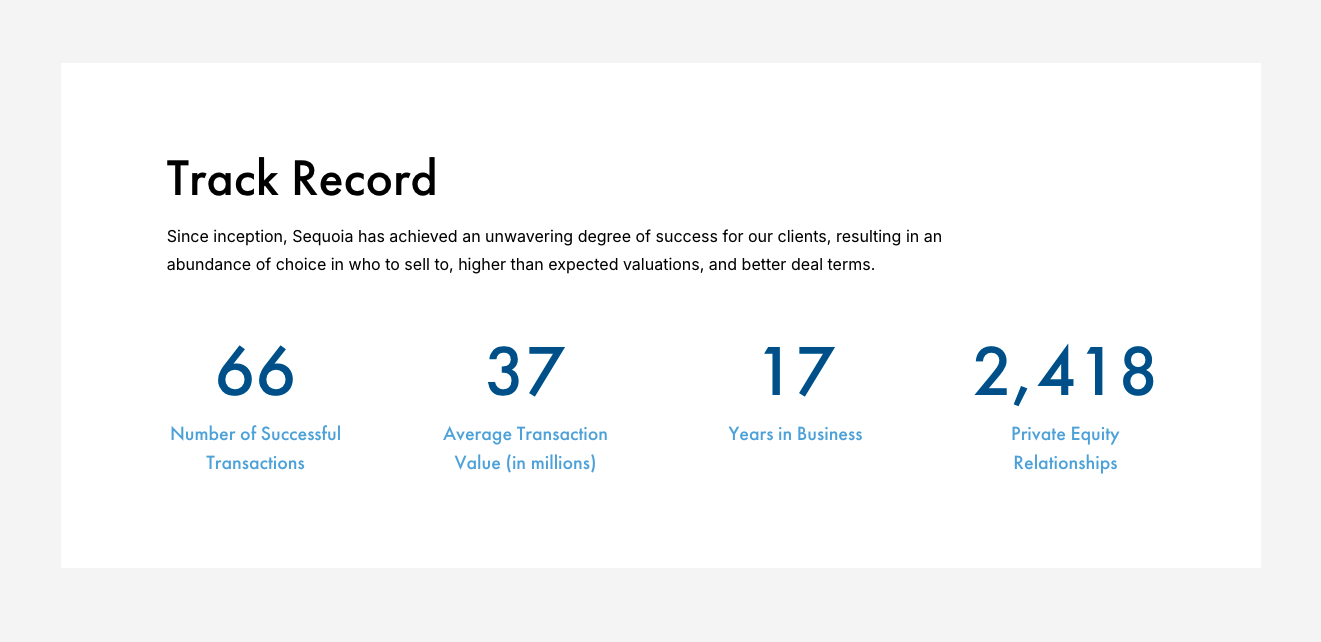
7. Shine a Spotlight on Blog Posts That Drive Credibility
Investing in content marketing is an exceptional strategy for boosting inbound website traffic and building brand and product awareness. But the benefits of blogging don’t end there.
High-quality, unique resources can play an important role in driving brand credibility. And they can even play a direct role in your sales processes, especially considering that user-centric, educational content boosts conversion rates by 131%.
However, the challenge with using blog posts to build brand trust among first-time web visitors is that they may not advance through the sales funnel as far as reading your blog.
With this in mind, it’s essential to use web design in a way that will instantly point out your content’s value to new leads and encourage them to interact with the content so that they can enjoy that value (and form positive opinions about your organization’s expertise and credibility).
A smart web design choice that can help you do this is to shine a spotlight on high-value, credibility-boosting blog posts.
Something as simple as including a ‘Featured content’ section on your homepage can be a great way to call your audience’s attention to relevant resources and encourage them to explore them.
For instance, look at how Equinox Gold implements this tactic on its homepage. Knowing that specific details play a major role in determining whether a news headline is relevant to its target audience of serious investors, this brand uses web design to ensure each post headline is visible in full. This simple approach allows visitors to instantly evaluate the relevance of each blog post without having to open unnecessary tabs. Plus, the amount of detail in each article provides ample space to showcase Equinox Gold’s positive track record, further establishing it as a credible and competent business entity.
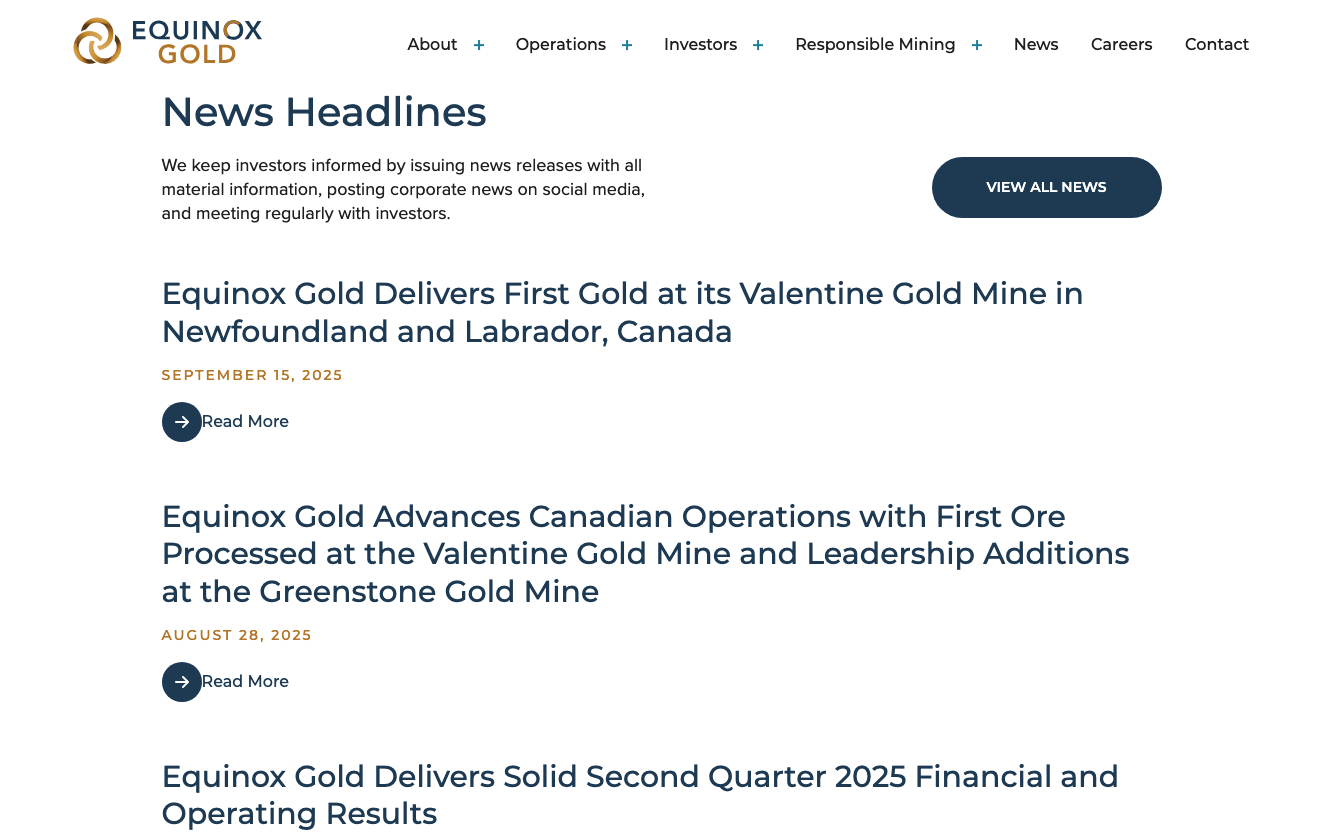
8. Illustrate Complex Processes with Visual Simplicity
How you present information on your website directly influences its conversion-boosting (or harming) potential.
User-centric design that prioritizes comprehension, readability, and ease-of-use isn’t just a way to move prospects through the sales funnel at a faster pace. It’s also a crucial element of creating enjoyable (and informative) browsing experiences for web visitors, which, ultimately, determines their confidence and comfort regarding your business.
If you’re trying to reassure your target audience of your company’s ability to remove their pain points, explore tactics that can help you illustrate complex processes in a way that’s easier to understand.
Prioritizing visual simplicity — whether through your site’s layout, formatting, or aesthetic appeal — is an excellent method to achieve this goal, seeing that it helps elevate product understanding without causing informational overload.
For instance, check out Rosie. At first glance, this business offers a fairly complex and innovative AI answering solution. However, by using visuals and headings to break down the setup process into easily manageable steps, Rosie effectively educates potential customers about its product. This helps them feel more comfortable with the idea of using an AI answering service through UX-boosting visual simplicity.
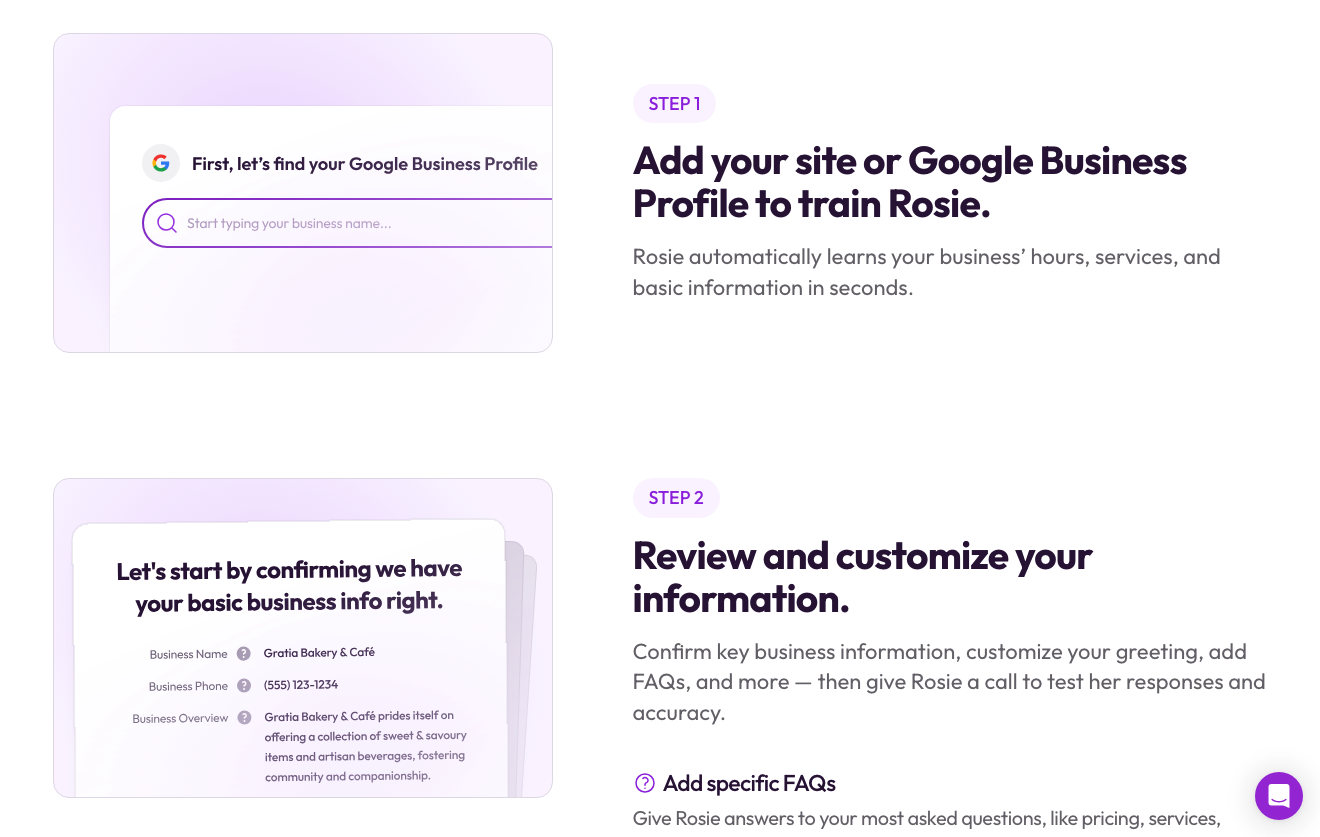
9. Ensure Your Site’s Design Accommodates Review Media Uploads
We’ve covered the importance of social proof in building web visitors’ confidence. But let’s face it — social proof and branded content aren’t always sufficient to earn your target audience’s trust.
One of the reasons for this is that fraudulent reviews are becoming so common. According to recent data, more than 80% of consumers have encountered fake reviews over the past years. And some of the most common platforms where this happens include Amazon and Google — the very places people go to research their purchases.
The second reason traditional social proof may not be enough to move the needle on brand trust is that text content (no matter how authentic) isn’t always attractive and engaging enough to make visitors interact with it for a sufficient period.
With this in mind, your site’s design has to accommodate review media uploads — especially if you run an ecommerce business.
By creating a dedicated space to show off detailed and informative user-generated content like product images and videos, you can effectively draw web visitors’ attention to this highly impactful social proof format and maximize their chances of perceiving your offer as good value for money.
Check out how moissanite jewelry company Icecartel implements this tactic on product pages. Knowing that real-life looks, feel, and performance matter to its audience, this brand sorts product reviews to show user-submitted videos first, seeing as these uploads do a much better job showing what Ice Cartel jewelry really looks like than plain text.
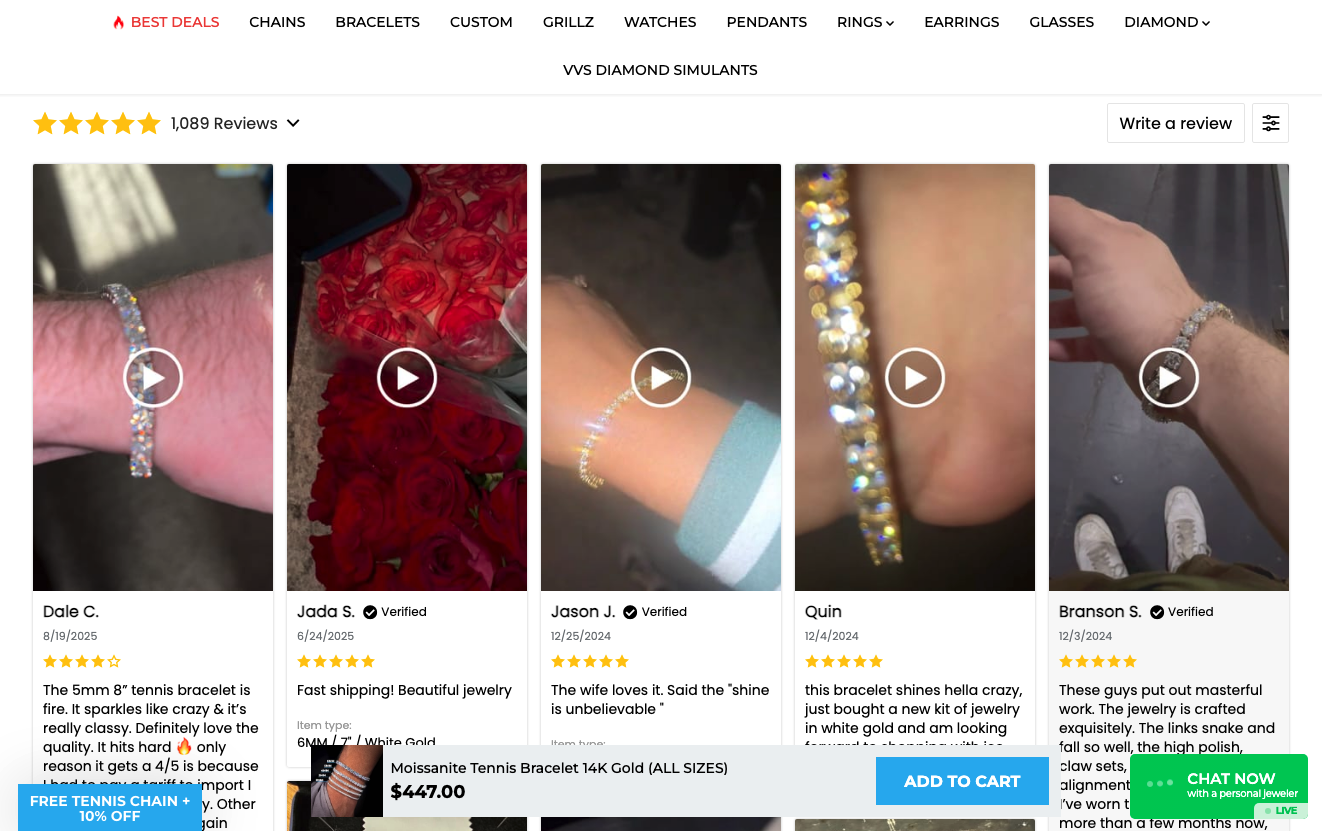
10. Showcase Your Expertise with Real Examples
As you explore web design tactics that can build brand trust and visitor confidence, don’t forget that consumers want brands to demonstrate expertise.
In fact, when it comes to the question of whom people trust to take buying advice from, scientists and experts rank just as high as peers — especially when it comes to innovative or niche solutions.
If you want your website to emphasize that expertise in a way that drives conversions, explore opportunities to showcase your team’s competence by featuring past work.
For instance, if your service is dependent on your portfolio of work, use web design to make that portfolio easy to find and interact with. Whether you highlight it in a specific homepage section or embed it in the navigation, just make sure that it’s easily discoverable. It can play a big role in convincing potential customers that they should have confidence in your company’s ability to resolve their pain points.
Envisio doesn’t stop at simply showcasing images of its past projects. Instead, this brand actively invites web visitors to click on each dashboard and interact with it, knowing that first-hand experience with these products is far more likely to demonstrate the quality of the brand’s work than anything it could say about its services.
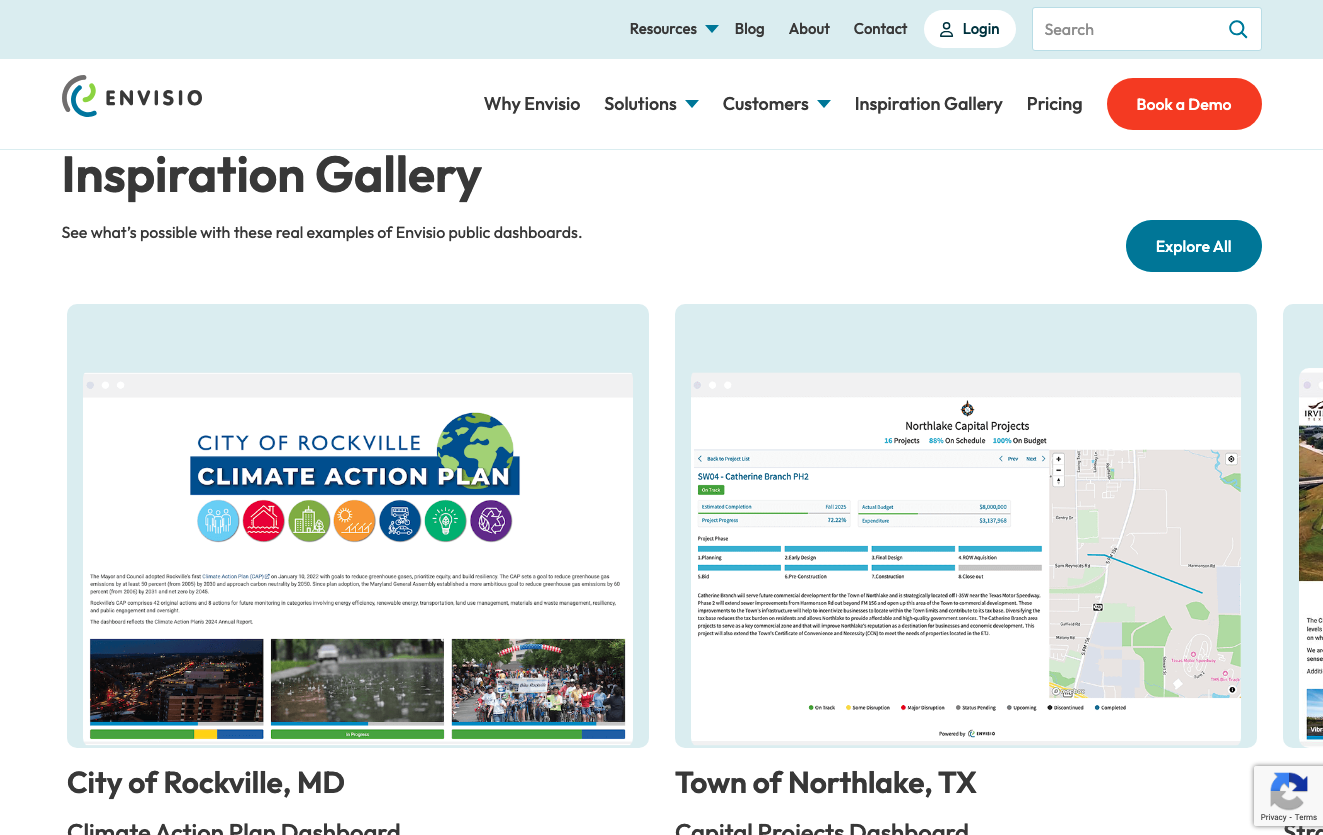
Final Thoughts
Investing in web design is always a good use of resources. Regardless of your business goals, creating a beautiful, high-performing, and user-friendly business presentation is a great way to attract and engage potential customers and, ultimately, to draw them into and guide them through your sales funnel.
Of course, to do any of these things, you have to ensure your organization appears credible and that your leads feel confident in choosing to buy from your business.
The web design strategies covered in this guide are all excellent methods to boost your prospects’ trust in your brand. More importantly, all of these web design tactics are simple, making it really easy to implement them on your pages and reap their benefits without too much work.



